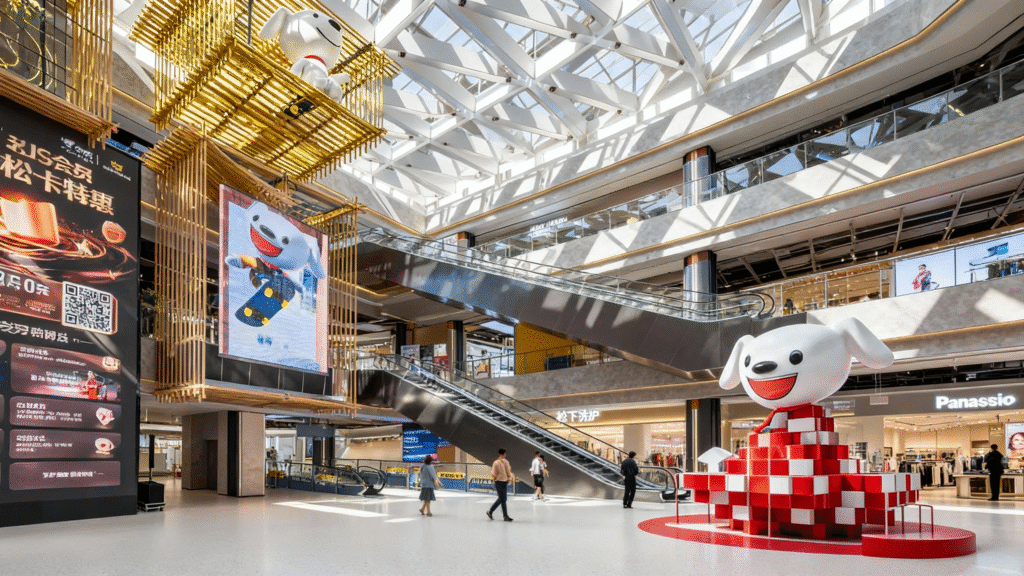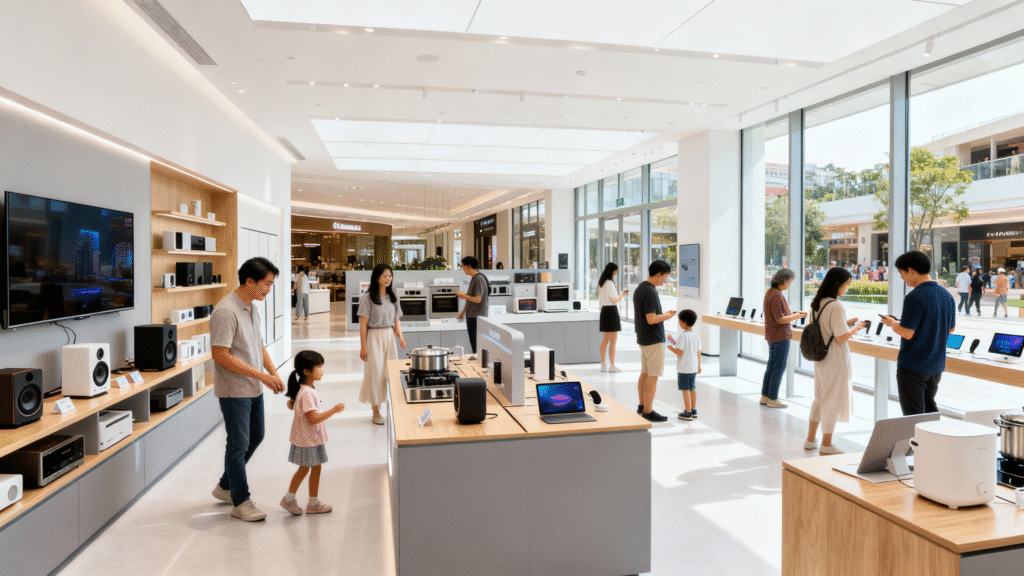How JD Is Turning Offline Stores Into Experience Hubs

For years, JD was the “engineering” answer to Chinese e-commerce: logistics, speed, and reliability.
Walk into a JD Mall in Xi’an or Beijing now, and you see something different. Kids are baking cookies. Parents are testing PlayStations. People are learning how to use their smart ovens and hair dryers, not scrolling through manuals.
If you play in home, appliances, consumer electronics, beauty tech, or home living, this is a channel you can’t ignore.
From E-commerce Giant To Neighbourhood Mall
JD Mall sits at the top of a broader network of physical formats, with malls in core cities and other concepts in lower tiers. The goal: recreate JD’s appliance strength offline with a better experience than traditional chains.
For global brands, JD is no longer just a line in a Tmall vs JD media plan. It is building its own end-to-end customer journey, from app to living room.
Experience-First, Not Display-First
The core principle is “experience-driven sales”. JD wants people to use products, not just view them.
Stores are wired for real use: ovens and coffee machines run all day; cleaning devices are tested on real mess; laundry and shoe-care areas use professional equipment, not props.
Three things matter here:
- Active participation: customers are guided to cook, clean, or test instead of watching staff demonstrate.
- High-consideration categories: the model is built for big-ticket decisions like full kitchen sets, air systems, home theatre, beauty devices.
- Confidence before conversion: after testing several machines and baking with one oven, price becomes one factor, not the only factor.
If you are a global brand, the key question is: what do you want people to actually do with your product inside a JD Mall?

The 5 km Strategy: Mall as Community Hub
JD describes each mall as serving a 5 km radius. The aim is repeat visits and familiarity, not just one big purchase.
To do this, JD layers retail with neighbourhood services such as cleaning services via mini program, kids’ DIY classes using in-store appliances, and weekend lobby events from launches to cosplay.
The result is a destination where people drop by even when they are not actively shopping for a fridge. For brands, these touchpoints build memory and trust long before someone hits “buy” on JD.com.
Staff as Creators and Guides
The staffing model is also different from a traditional electronics store.
JD employees manage experience zones and overall service. Brand specialists sit in your areas with the brief to educate and guide, not just push volume. Many staff are also encouraged to behave like small KOLs: they run Xiaohongshu accounts with clear personas such as foodie, tech geek, or home organiser, and create short videos and livestream from the store, turning quiet weekdays into “virtual store” days.
If JD Mall is in your mix, you need to decide how these people talk about your brand – and whether they have the right demos, stories, and content to share.

Closing the Loop Between App and Store
JD connects the mall tightly to its main app and data layer.
Search for a product in the JD app, and you may see the nearest mall and its campaigns. Register for an in-store class and your JD ID is linked to that visit. Electronic price tags keep prices aligned with online and carry QR codes that track “see offline, buy online” behaviour.
This matters because your investment in JD Mall should be judged on both store sales and uplift across JD’s online ecosystem – and any mismatch in assortment, pricing, or messaging between online JD and JD Mall will be instantly visible to shoppers.
The most successful brands will treat JD Mall as a testbed where content, merchandising, and service are coordinated with their JD.com strategy.
If You Are a Global Brand, What Now?
If your category fits JD Mall’s focus, this is not just “another offline door”.
A few concrete moves:
- Define your in-store use cases. Be clear about the experiences you want to design: a full meal cooked on your appliances, a skincare routine, a home cinema walkthrough.
- Align content and staff enablement. Give JD staff simple, localised stories, checklists, and content that make your products easy to explain and film.
- Measure beyond the store. Work with JD to read the combined impact of mall exposure and online sales, not just POS numbers from one location.
Turning JD Mall into a Brand Engine, Not Just a Channel
At BeyondBorderGroup, we help global brands translate JD’s ecosystem into clear decisions mapping where JD Mall fits in your broader China portfolio, which cities and formats to prioritise, and how to structure pilots instead of one-size-fits-all rollouts.
We work with brands to design in-store experiences, local community hooks, and staff playbooks that work on the ground – from demo flows and class formats to Xiaohongshu content angles that feel native to Chinese consumers, not imported.
Because content volume is now a real constraint, especially when every store employee is a creator, we also work with AI-native partners such as HubStudio to scale visual and video assets on-brand and at speed.
If you are rethinking your JD strategy or planning how to engage with JD Mall, we can help you turn insight into a concrete roadmap and turn these experience hubs into a real engine for your brand in China.
